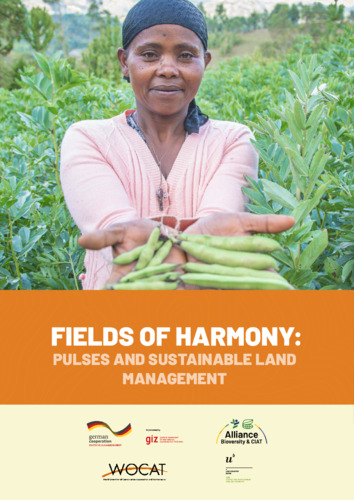Fields of harmony: Pulses and sustainable land management
Sustainable land management (SLM) entails the judicious use of land resources, incorporating soils, water, animals, and plants, to meet dynamic human needs, while concurrently safeguarding the sustained use of these resources and preserving their environmental functions. SLM serves as a guiding framework for sustainable agriculture, aligning its goals with environmental stewardship, efficient resource use, and long-term productivity. Adopting SLM practices promotes soil health,
biodiversity conservation, water management, climate resilience, and economic viability in agricultural production.
In the delicate balance between meeting food demands and safeguarding natural resources, the integration of pulses into SLM is significant. Pulses, belonging to the family Leguminosae (alternative name: Fabaceae), have garnered increasing attention not only for their nutritional richness but also for their pivotal role in fostering agricultural sustainability. Pulses are dry, nutrient-dense leguminous seeds, that offer essential proteins, vitamins, and minerals, enhancing nutrition and
health. Moreover, growing these legumes builds ecosystem resilience, provides livestock feed, and boosts household income. Beyond their agronomic benefits, pulses play a crucial role in reducing greenhouse gas emissions. By minimizing the need for synthetic nitrogen fertilisers, pulses contribute to lower carbon footprints in agriculture. Incorporating pulses into agricultural systems aligns with SLM, fostering resilient and productive land use. With their myriad benefits, pulses also play a vital role in agroecology and the transformation of agri-food systems.

